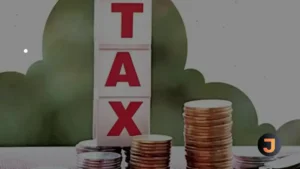As election fever in the US grows increasingly frantic with November’s crucial poll looming ever closer, Republicans in Congress are gearing up not only to extend former President Donald Trump’s 2017 tax cuts but also to propose additional reductions, particularly for corporations, a move that has already started to ignite a fierce debate over the country’s fiscal policies. The 2017 Tax Cuts and Jobs Act brought huge changes to the US tax landscape, lowering tax rates for individuals across various income levels and reducing the maximum corporate tax rate from 35% to 21%. While the tax cuts for individuals are set to expire in 2025, the corporate tax cuts were made permanent by the Republicans who drafted the law.
Increase in US National Debt
Republican party lawmakers, supported by some of Trump’s economic advisers, have now confirmed that they are contemplating further corporate tax breaks, despite the fact that research published by several highly respected institutions, including Stanford University and MIT, estimates that these additional cuts could increase the US national debt by approximately USD 1 trillion over the next decade. Proponents argue that such measures are necessary to enhance the US’s global competitiveness.
Trump, currently awaiting sentencing following his conviction on 34 counts of falsifying business records before the 2016 election, has been assuring potential donors that his leadership would result in more favourable tax conditions. Without his intervention, he has warned, they might face “the biggest tax increase in history”.
Biden: New Taxes on Business
In a press interview, Senator Mike Crapo (R-Idaho), who is likely to chair the Senate Finance Committee if Republicans gain control, spoke of the widespread impact of corporate taxes: “Corporate taxes are paid by workers, by retirees, and by consumers, so it has a huge impact on everybody in the United States.” Meanwhile, President Biden and congressional Democrats have already outlined policies which represent a clear dividing line between Democrats and Republicans. Biden has already said that he aims to raise taxes on the wealthiest individuals and corporations, confirming that he will let the individual tax cuts from Trump’s law expire.
The President’s proposals include new taxes on businesses to fund investments in childcare, care for the elderly, affordable housing and education. Meanwhile, the Congressional Budget Office has projected that extending all of Trump’s tax cuts – including those to individuals – would add USD 4.6 trillion to the national debt over the next decade, a figure that includes the USD 1 billion ascribed to the additional reductions in corporate tax currently being proposed. While US Republicans appear committed to minimise the tax burden on businesses, Biden and other global leaders are working towards a 15% global minimum corporate tax rate to prevent businesses from exploiting tax havens, and a reduction in the US corporate tax rate, as some Republicans – including Trump – propose, would undermine this 2021 international agreement, which was made under the auspices of the OECD and signed by 136 countries.
In a statement, Louisiana’s Steve Scalise, the Republican whip in the House of Representatives, said: “We want to keep rates low to keep America competitive.” Noting that corporate tax rates have previously hit 35%, he continued, “We don’t want to go back to those days.”
Democrats argue that reducing corporate taxes would benefit the wealthy and some of the powerful groups they hold responsible for persistent inflation. They believe higher corporate taxes would help redistribute wealth accumulated by some of the richest US citizens during the pandemic. According to data from Forbes, between 18 March 2020 (coinciding roughly with the first Covid-19 lockdown) and 18 March 2024, the combined wealth held by US billionaires increased from USD 2.9 trillion to USD 5.5 trillion.
Fairness
Lael Brainard, Biden’s national economic adviser, recently articulated the administration’s stance in a speech at the Brookings Institution. She framed the choice as between returning to “failed trickle-down approaches” or pursuing Biden’s strategy of growing the economy from the middle out and bottom up. “Tax fairness is central to the president’s approach.”
Biden has declared his intention to let the Trump-era tax cuts expire, a move some Democrats hope to leverage against Republicans. They argue that the temporary nature of many cuts was a deliberate design by Republicans. Conversely, Karoline Leavitt, the Trump campaign’s national press secretary, accused Biden of planning “the largest tax hike ever” if the 2017 law expires. She made it clear that Trump, if re-elected, would advocate for more tax cuts to stimulate the economy and reduce the national debt.
Biden’s tax proposals focus on using new revenue for public investment, with his 2025 fiscal year budget including universal pre-school childcare, 12 weeks of paid family and medical leave, expanded tax credits for the poor and a new tax break for first-time homebuyers. These initiatives would be funded by increasing the corporate tax rate from 21% to 28%.
A study by researchers from Princeton, the University of Chicago, Harvard and the US Treasury Department found that, while Trump’s tax law led to some investment and wage growth, it did not meet its economic promises.
Biden’s legislative successes, such as the 2022 Inflation Reduction Act and the Chips and Science Act, have delivered substantial tax incentives for microchip manufacturers and clean energy producers, leading to construction and job booms in places such as Phoenix and Wisconsin which have hitherto been struggling in the aftermath of the 2008 financial crisis, and the economic challenges posed by the war in Ukraine and the pandemic.






